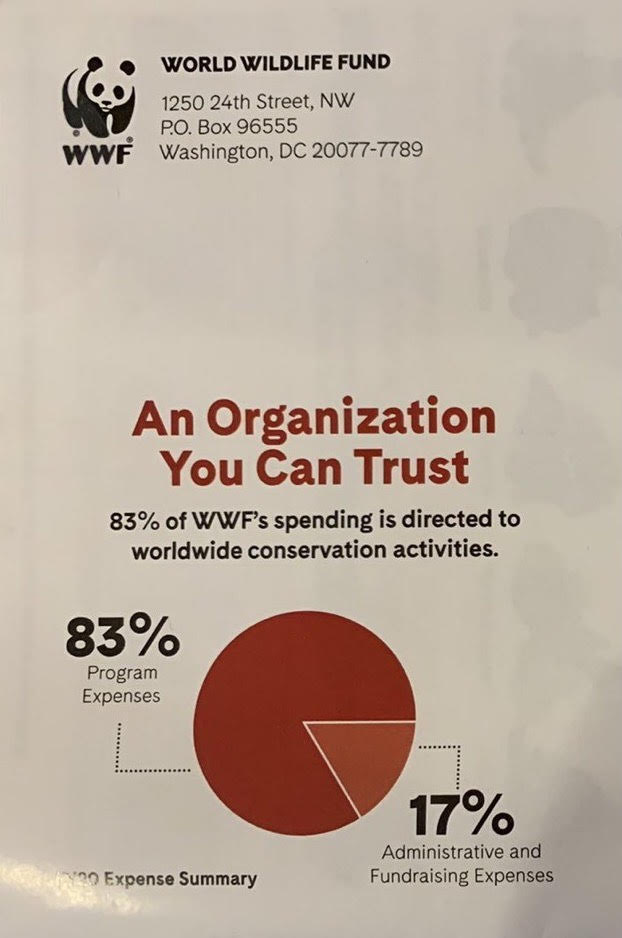
Every year at about this time, as people become more inclined to donate to charity for the holidays, memes start floating around regarding nonprofit overhead rates. “Don’t give to these orgs! Only 4 cents of every dollar you donate go to helping people! The other 96 cents go to mansions and truffles for their well-paid executives!” Which is quite ridiculous; most nonprofit executives only have at most two mansions, and consume no more than 100 grams of Périgord black truffles each week. Sadly, the public is pretty clueless regarding our work and are quick to latch on to nonsense regarding overhead. I wrote about it here in How to deal with uninformed nonprofit-watchdogs around the holidays.
Unfortunately, one of the biggest drivers of the narrative around overhead being no-good-very-bad are nonprofits themselves. Specifically, large international organizations with significant brand recognition. They usually do vital, life-saving and life-changing work, so I am not here to question their programs and services. However, in their quest to raise funds, they continue to use archaic messaging around overhead that are toxic for the entire sector. Here are a few examples:
charity:water has a “100% model”: As written on their website: “When charity: water began, we made a bold promise: 100% of public donations would go directly to fund clean water projects. We’d even pay back credit card fees, meaning if a donor gave $100 with a credit card and we got only $97, we’d make up the $3 and send the full $100 to provide clean water for people in need. So, how do we pay our overhead? From day one, we’ve relied on a small group of generous private donors to fund all of our operating expenses. It’s not always easy, but it’s an approach we believe in deeply.”
Pencils of Promise has similar messaging: “Donors rarely know where their money goes, so we set out to change this. By covering our operational costs through private donors, events and companies, 100% of every dollar donated online goes directly into our programs to educate more children.”

World Wildlife Fund, meanwhile, recently sent out a mailer with this graphic, proudly touting that with 83% of their funds going to conservation efforts and only 17% going to administrative and fundraising expenses, they are an “organization you can trust.”
OK, charity:water, POP, WWF, and other mega charities who still cling to this type of fundraising tactic, please grab a seat, we need to have a talk. Your work around access to safe drinking water, education opportunities, conservation, and other vital issues is important and requires money to sustain, so I understand the need to constantly raise funds in the way that you think would be most effective.
But messaging like “100% of your donations go to programming because we found some private donors who will pay for operations” is ridiculous and nonsensical. It’s like me, a parent, saying “100% of the food I give my kids is nutritious. How is that possible? I got their grandmother to buy them chips and candies!” Besides being nonsensical, manipulative, and insulting to people whose work is considered “overhead,” your views and messaging are outdated and harmful to the entire sector. I (and many others) have written multiple posts on this topic, but here are some key points I want mega charities to really grasp:
You are hurting organizations led by Black, Indigenous, AAPI, Latinx, and other marginalized communities: Organizations led by communities of color, disabled people, and other marginalized communities tend to be smaller, which means they naturally have higher overhead. By training donors and funders to believe that overhead is bad, you are training donors to have negative views of these organizations, which leads to less giving as well as more restrictions, such as foundations capping how much “indirect” expenses they will support. While you are raising money for your org, you are harming other organizations, including the vital local orgs in the countries you are working in. Many of you claim to be aligned with Equity, Diversity, and Inclusion. If so, then don’t continue advancing philosophies and practices that harm communities of color and other marginalized communities, including your local partners.
You are hurting policy, advocacy, research, systems-change organization: These organizations are trying to change laws and systems to make it so that there are fewer needs to tackle. If their work can help change laws so that there are fewer kids in experiencing education inequity, fewer communities without access to clean water, etc., that’s a good thing, right? Are we all not trying to work toward a world where charities like yours are not needed? Yet you are making it more difficult for them to raise funds, because organizations working in these areas have higher overhead, just by the nature of their work. By continuing to hammer on the message that overhead is bad, you are preventing broad lasting change and are helping perpetuate the very injustices you are raising money to fight.
You are furthering public ignorance and distracting from the real issues: “Donors rarely know where their money goes”? That just reaffirms the belief that nonprofits are opaque and shady. “An organization you can trust”? That just reaffirms the belief that most nonprofits are not trustworthy. You are also distracting from what really matters: The systemic issues we are addressing, our progress toward solving these issues, and the public’s role as partners in the work. You are turning donors and funders from effective partners into suspicious, narrow-thinking micromanagers. As I’ve written before, houses are on fire, and instead of getting people to focus on grabbing buckets and water, we’re distracting them with thoughts about how much money is being spent on the water, and how much on the buckets. And God forbid any money should be spent on firefighters’ wages or protective gear.
It’s time for a change. Stop furthering the idea that “overhead” is bad. Operating, administrative, and fundraising expenses are necessary for us to do effective work. Our sector has for decades been underinvested in, with many staff still underpaid, overworked, lacking healthcare and retirement benefits, etc., which means we are not as effective as we could be in solving the myriad issues we are working on. Despite the data on the pervasive lack of adequate investment in nonprofits, the public continues to think that we are lounging by our pools, eating caviar by the fistful. We have ourselves to blame. Many of us continue these types of messaging. We need to stop.
Mega charities, though, you have an oversized influence on the public, so you need to understand how your fundraising tactics have been harmful. Sure, manipulating donors with messages like “100% of your donations go to direct services” works to bring in money; but your organization’s financial well-being is not a good enough reason to continue using outdated, toxic practices. Stop raising money by crapping on the entire sector, perpetuating ignorance, and making it harder for everyone else, especially organizations doing systemic-change work and organizations led by marginalized communities.
—
Go here to find and email your elected officials to encourage them to enact legislations preventing foundations and Donor-Advised Funds from hoarding so much money.
Write an anonymous public review of a foundation on grantadvisor.org

